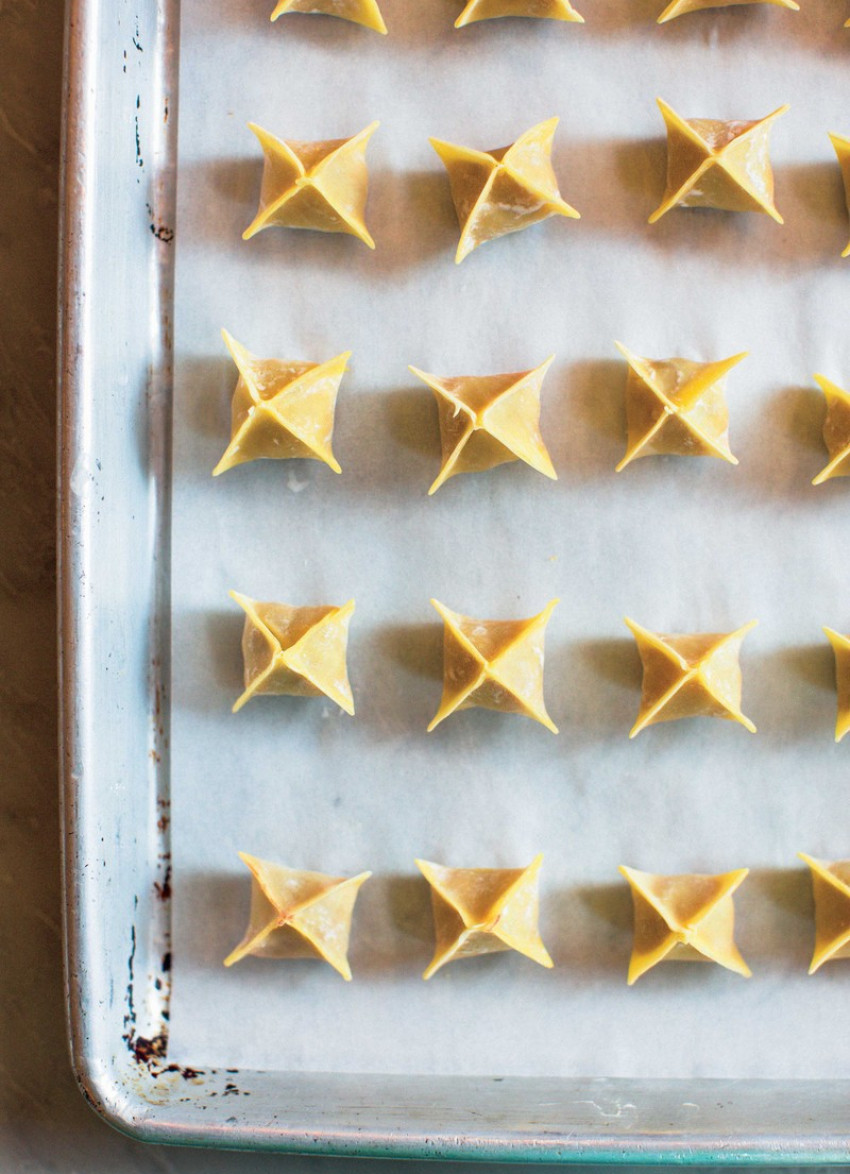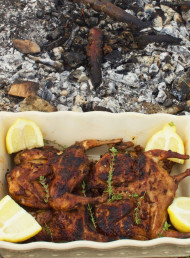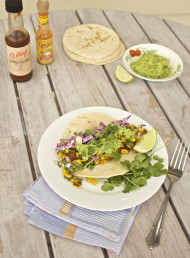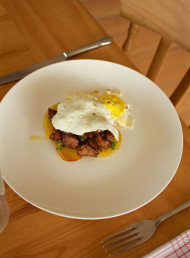Cook the Books – Prune by Gabrielle Hamilton
Photography by David Parker .

Some cookbooks take you by the hand and don't let go until the cake is baked. Others, like Gabrielle Hamilton's Prune are a little more assertive, but David Parker discovers that's not always a bad thing...
Read the original recipe from Prune here.
Prune begins with no 'about' section, no foreword, no list of kitchen items to buy or rundown of basic techniques. On the front cover a sticker informs that this is a cookbook by the author of Blood, Bones & Butter, a New York Times bestseller that has somehow fallen off my radar. I have no idea who Gabrielle Hamilton is, and this book has no time for my ignorance.
Instead, Prune launches straight into a compendium of recipes that reads like an official guide to running the eponymous New York restaurant. After putting the book down, in theory you'd be able to walk into Gabrielle Hamilton's kitchen and run a service, tidy the walk-in cooler to her strict standards, organise leftovers and cook a hearty staff meal. It's unlike any other cookbook I've ever read.

The recipes are very precise with detailed instructions and tips on what not to do. The pages are covered in a patina of fake food spills and faux-handwritten notes, important printed text is underlined and other ingredients are added in by hand, I guess to give the impression you've been given some sort of master book the restaurant actually uses.
The side notes are sometimes helpful, sometimes overly pedantic for the home cook, sometimes funny and often utterly useless, like a specific note about not using a particular wonky table in the restaurant. Gabrielle writes with so much personality, though, that even these asides captivate.
The food is a fusion of classic American with a variety of influences from other cultures. Manti is something I wanted to try when I reviewed Turkish cookbook Anatolia, there's something about the act of making little dumplings that I find soothing, so I felt it time to give them a go.

I started off by assembling the items I needed to have in front of me, a pint of water, a knife, small pastry brush, a tray for the dumplings. I felt very organised and official. I almost took over the entire kitchen table. I used two spoons to make neat little lamb meatballs, I thought about just filling the manti as I went but with them being so small I realised it was better to follow the book's directions and prepare in advance to avoid overfilling.

I cut the wonton wrappers into four equal squares, Gabrielle prescribes “one cut north-south; one cut east-west”. I oblige, language like this makes me imagine her to be fastidious, maybe a touch overbearing. It makes me feel like a sous chef in my own kitchen. I kinda like it.

I didn't have cotton napkins lying around so just used a damp sheet of kitchen paper to keep the wonton skins from drying out. Then I started the long task of folding the manti; placing a meatball in the centre of each miniature square, folding the corners into the centre and squeezing the seams together. It probably took me about an hour to roll 40 meatballs, then fill and fold all of the manti, but I was going at a leisurely pace; at sous chef speed it would have taken much less time.
Next I froze the manti, I think you probably could just cook them fresh but I planned to make them ahead of time.

The next day I grated the garlic into the yoghurt with some salt and a splash of olive oil. The recipe said it needed to be 'assertive', I got someone else to taste it but received an odd look when I asked if they thought it was assertive...a bit more garlic then.

I blended the cayenne pepper and salt with the butter, the recipe didn't specify unsalted butter so I hoped I was doing the right thing but it didn't taste overly salty. I put the cayenne butter back in the fridge until it was required.

I pulled the manti out of the freezer, onto a baking tray and into the oven. When the tips looked a little brown I pulled them out and dropped them into the simmering beef stock. I couldn't buy the 'College Inn' brand of beef stock ' specified. Gabrielle would be disappointed in me, given that she explicitly stresses that chefs should not try and 'improve' this recipe by using home made beef stock, or making wanton dough from scratch. From what I can tell, College Inn is a generic American supermarket beef broth, so I substituted it with a can of Campbell's beef stock and it seemed to do the trick.

When the manti were almost done simmering I melted the cayenne butter. A trick here is to make sure you don't return the butter to the heat while you're taking photos, causing it to burn, choking your fellow housemates with cayenne smoke, but that's just a little tip, it's not based on personal experience at all.

I dolloped the garlic yoghurt in the centre, carefully placed the softened manti around the edge with little tongs, then with a couple of spoons of stock and a few drips of the cayenne butter they were ready to eat.

The wonton skins were so perfectly soft around the meat where they had been sat in the stock but the tips that stuck out of the stock were still a little hard from the toasting, I wasn't sure about that texture. The yoghurt was great, although there was far too much of it in my opinion, I didn't know what to do with it all! I think the cayenne butter was the real saviour of this dish though, providing rich heat, it would have been quite bland without it.

Prune by Gabrielle Hamilton is published by Hardie Grant RRP $NZ 69.99 and is available in stores nationwide.
latest issue:
Issue #120
As the days become shorter, and the nights cooler, the latest issue is perfectly timed to deliver delicious autumn dishes. From recipes using fresh seasonal produce such as feijoas and apples, to spectacular soothing soups and super-quick after-work meals in our Food Fast section, we’ve got you covered. With Easter on the horizon, we feature recipes that will see you through breakfast, lunch and dinner over a leisurely weekend holiday, and whip up chocolatey baking treats sure to please. We round up delicious dinners for two and showcase a hot new Korean cookbook before heading south to Dunedin to check out all that’s new in food and dining.The latest issue of dish is on sale NOW at all good bookstores and supermarkets – don’t miss it!





